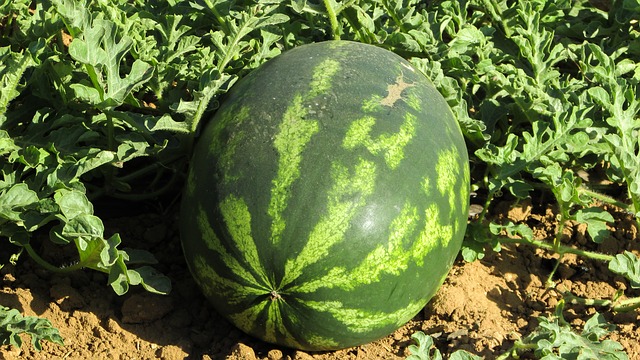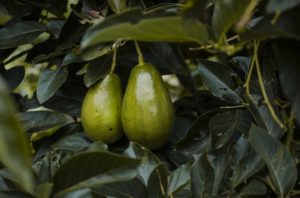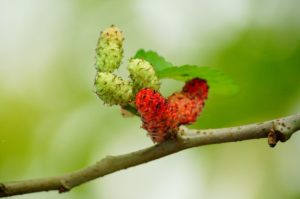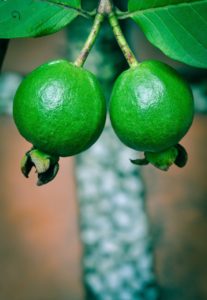Best and Worst Edibles for Hot, Dry Climates

I’d like to say I’m an ambitious gardener that likes to take risks and push the limits on what can be grown in hot, dry climates like the Arizona desert. With that being said, there are some fruit trees and edible producing plants that I’ve decided aren’t worth the effort. Being a part of various gardening communities, there are some things that everyone wants to grow, regardless of what people tell them. If you want to go to great lengths to grow these things, you can have success, it’s up to you to decide what is worth your investment.
Let’s take a look at some of the best and worst edibles for hot, dry climates. When I say overrated, I’m referring to the things that have had very marginal success in this type of climate with general care requirements. Underrated, can be defined as the edible producing plants that can produce well with standard care or a little extra help.
Let’s start with the overrated Fruit Trees and garden plants
Avocados
This is probably the number one mentioned fruit tree in many of my gardening groups that people ask if it can grow in our desert climate.
I’ve seen a sporadic picture of one of the rare mature Avocado trees in our area, but they are few and far between.

Rarely have I ever seen anyone post anything regarding harvesting high quality avocados in our desert climate.
With a lot of babying, through heavy mulching, shade structures, lots of watering, and consistent feeding, you can get an avocado to limp through our summers.
Time and time again, an avocado tree becomes a casualty to our extreme dry temps. Even with the few mature Avocado trees in our areas, I think the heat ruins the fruit.
Cherries
Since I grew up in what is known as the “Cherry Capital of the World” in a small Northern Michigan city, it pains me to say that cherry trees and the desert don’t mix.
I’ve never attempted to grow a traditional cherry tree, only have observed others’ failed attempts from afar.
More and more low chill cherry trees have been developed over the last few years, but until I see people harvesting cherries next to the cacti, I’m keeping my distance from purchasing one of these trees.
Bananas
Ok, so I’ve seen bananas in our desert area, but they tend to be too finicky for me. Bananas in our monsoon winds, tend to buckle over or the leaves just get thrashed from the hot dry air.
Bananas can adapt to our heat, but appreciate some relief from our hot sun in the afternoon, like most things do.

The main thing that makes banana growing a struggle here is our cold snaps.
A frost can easily kill back your banana plant, which creates additional time needed to produce a crop of bananas.
I think a lot of people tend to have banana plants, but aren’t able to get a crop for this reason.
They are also heavy feeders and need a lot of water since their big leaves transpire a lot.
Corn
Corn is a crop that can grow great if you’re on a farm with lots of acreage. For the typical urban backyard gardener, that usually isn’t the case.
So for that reason, I’d recommend avoiding corn in hot, dry climates.
Corn is also a heavy feeder crop requiring a lot of fertile soil, which we don’t have much of, so you’ll need access to a good supply of manure or compost.
Berries
I’m guilty of trying to grow various types of berries here in the desert. I’m still maintaining a blueberry plant that I’ve managed to keep alive for a couple years now.
If you want to try growing blueberries, here is my guide for growing them.
The first blueberry plant I planted died, but I was able to learn a few things to help me the second go around.
Blueberries are another one of those plants that I see on death row quite often here in the desert. It makes sense though, since when you think of blueberries you think of a cool, moist, climate in the north.
Although many southern highbush varieties have been propagated that have low chill requirements, so they can be grown in warmer areas.
The main problem with blueberries, strawberries, and raspberries in a hot, dry climate is the soil.
Hot, dry climates usually have clay soil, which has a high PH. Berries like an acidic soil, so you can never have success growing berries directly in our soil.
They have to be grown in containers with an acidic planting mix.
Not only is the soil high in PH, our city water compounds the problem with salinity.
Berries really like rain water, which we get very little of. If you want to grow berries in a hot, dry climate, try growing blackberries.
Blackberries seem to grow a lot better in our climate, if you select the right variety. I’ve had the best luck with a thorny variety called Rosborough.
Now for the underrated fruit trees and garden plants
Peaches
When I moved to the Arizona desert, I never would’ve thought a peach tree would grow here. I then heard of a peach festival in one of the outskirts of the city that occurred every year.
My family checked it out and the farm had a huge peach orchard with some of the best tasting peaches.
It became a tradition for us to go to the peach orchard every year and I knew I had to get a peach tree of my own. Peach trees take the sun and heat pretty well.
They are prone to some fungal type diseases, so you may need to spray them occasionally.
Paying attention to the chill requirements is important for getting a peach tree in a hot, dry climate. You want to get the lowest amount of chill hours possible.
The peach trees in our area produce peaches in May, which is way earlier than most areas of the country that produce peaches.
May is when the temps really start to ramp up, so the heat tends to improve the sugar quality, but it still isn’t our insane midsummer heat.

Melons
It took me a few years to figure melons out, but they are great for hot, dry climates. One of the major problems I had with watermelons was they were slow to get going.
I’ve discovered that they are heavy feeders, so getting them started in a mound of compost goes a long way.
Also, they’re really susceptible to aphids and whiteflies, so if you have a healthy plant it will help build some resistance to pests, and then maintaining pest control as necessary.
I’ve tried several different varieties and methods, but the variety that’s been awesome for me is Desert King.
Desert King produces an orange fleshed watermelon that tastes excellent. I’ve also had success with honeydews and cantaloupes. Cantaloupe seem to be the easiest melon to grow in our climate.
Mulberries
I think mulberry trees get a bad rap, due to the allergens from pollen, but it’s the male mulberry tree that is the problem.
Here is my guide to growing mulberries.
Male mulberry trees don’t produce fruit, so the fruiting varieties are female without the pollen issues.
Many communities have banned mulberry trees in our areas, but if you are able to plant one, they produce very quickly, and the berries are tasty.

Mulberry trees grow really rapid and do well in a hot climate. Again, you want to make sure you are getting the right varieties for your climate.
Since it grows rapidly, if it’s in a small backyard, you may want to control with pruning.
Beets
Fresh beets are amazing! Beets grow extremely well in our climate.
I’ve only attempted growing them in raised beds, so not sure how they would do sowed directly in our soil, but in a raised bed they are virtually one of the easiest edibles to grow.
Beets are more of a fall/winter crop, but I’ve been able to get around three crops a year with staggered planting. They will pretty much grow in our area from Sep-May.
As long as you have good soil, they don’t need a ton of extra feeding, it’s mainly just irrigating them as needed. The winter months tend to have cooler nights, so they don’t need to be watered as frequently.
Guavas
I had never had a Guava for the majority of my life. I thought of Guava’s as a drink or something grown in Hawaii. Guava’s really love our heat!
Here is my guide for growing guava trees.
Guava trees tend to grow faster as the temps increase. The dry air doesn’t seem to have too much of an effect on getting them to fruit, like some other tropical fruit trees.
They do like some extra water in the hottest part of the year. Another nice thing about the Guava tree is they fruit a couple times a year. I get a crop in late summer and another in early spring.

Like most tropical fruit trees, they’re sensitive to frosts and can be killed by cold temps. Guavas are a little more cold tolerant and can take some temps into the upper 20’s.
Final Thoughts
There you have it, some of the best and worse edible plants to grow in hot, dry climates. I’m all for experimenting, but if you want to ensure success, try some of the underrated edibles for a bountiful harvest even in extreme heat conditions.
Please comment below on anything you enjoyed from this post.
